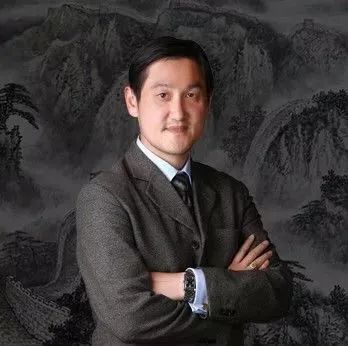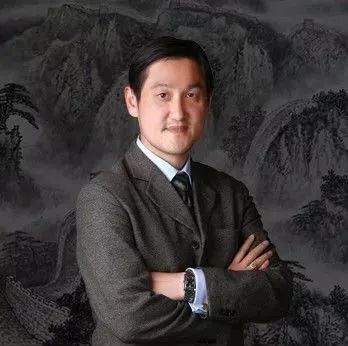.jpg)
每个SFE经理最头疼的往往不是如何搭建系统,也不是如何制作表格,更不是如何计算奖金。而是如何说服销售经理填表格。而在大部分销售经理眼里SFE往往是鸡肋。他们很难理解填几张表格,难道销量就会上去?
这时《亮剑》中团长李云龙的一句台词触动了我“我就不信,天天讲政治就能把鬼子讲跑?!”政委和SFE经理有着许多相似之处:都是对别人管头管脚却不承担结果,关键时刻都可以向上级汇报干扰对方的行动,都会要求对方做一些看似和结果无关的案头工作。
李云龙当团长五上五下,和历任政委都相处不好,但碰上没有作战经验,燕京大学毕业的政委赵刚就成为生死兄弟了,之后还当上了军长。仔细观察赵刚身上有着SFE经理所需的八大潜质。故写成了SFE经理的八大军规,与君共勉。
一.只要不是原则问题销售说了算
赵刚亮相的第一句台词就是:“只要不是原则问题,他说了算。”当李云龙要调动一个营的部队缴获伪军骑兵队的装备时,政委赵刚并没有按照军事条例进行阻止,更没有打小报告,而是分析了部队缺乏装备的困难以及战斗风险可控的因素同意了这一行动。在销售过程中,总部从全盘考虑有很多规章制度,而在实际的局部市场可能不适用。作为SFE经理绝不能拿着鸡毛当令箭,僵化地执行总部要求。系统的操作方式要由销售说了算。只有销售认同的流程才能存活,才有生命力,才有战斗力。
二.原则问题坚持到底
在一次对日作战中,李云龙杀得兴起要亲自冲锋,赵刚坚决地让警卫员把他抱住,避免指挥官受伤影响作战。作为SFE不能做老好人,发现任何不合规的现象都要及时制止。以避免公司因此遭受损失。
三.主动提供有用的情报
赵刚一到任李云龙认为上级又派了个耍嘴皮子的人来,冷言相对。赵刚适时地提供了日军特种兵的情报,双方就此展开了讨论。作为SFE经理会接触大量的信息,比如竞品的重点目标市场,我们老客户的流失率,新员工的适职情况……都是销售经理感兴趣的信息,以这些信息为开场白,你可以轻松地敲开销售总监的大门。
四.关键时刻展示一下销售技巧,至少在演讲技巧上超过销售经理
赵刚第一次得到李云龙的刮目相看是在一场攻坚战中。他在150米以外的距离三个漂亮的点射,击毙了日军的三个机枪手,确保了战斗的顺利进行。从此李云龙认为这个政委是真正懂打仗的,经常主动与他讨论战斗方案。作为SFE经理必须掌握超越普通销售经理的销售技巧,这样才能让销售认同你。如果你说那样太难,可以从给医生讲如何做数据分析为起点,当你获得了医生的认可后也就获得了销售认可。另一个途径就是提升自己的演讲技巧。销售通常是全公司最能说,最有气场的人,当你练就了更高的演讲技巧、更大的气场,也就很快会获得他们的关注。销售从来就只服强者。
五.凭借你提供的信息和你所掌握的销售技巧帮助其开发一家医院
赵刚在遇到日军偷袭八路军总部时,基于自己收集的特种兵信息,与李云龙讨论并决定自己带两个营保护首长,由李云龙带一个营伏击日军观摩团。最后获得成功,使得特种部队无功而返。作为SFE经理如果能够基于自己收集、分析的信息与销售经理讨论如何有效地开发一家医院,就能让销售经理认同SFE的作用。即使开发不成功,你也将学习到SFE理念和销售现实的差异,为下一次成功奠定基础。
六.善于同销售喝酒,畅谈未来
取得胜利后李云龙请赵刚喝酒,赵刚婉言谢绝。李云龙劝道:“你不是提倡工农结合吗?不喝酒怎么结合?”于是两人大醉一场,结为生死之交。SFE经理在和销售喝酒时绝不能礼貌地点到为止,即使酒量不好,也要摆出把酒当歌,人生几何的气度,只有这样销售才会把你当做共担指标的兄弟,才会和你肝胆相照。
七.随时帮助销售经理总结经验并转化为流程,助其有效地管理团队
骑兵连长来自军阀队伍,只会打骂士兵不懂得如何把自己的方法总结出来,教授士兵。李云龙也没什么好办法,赵刚就及时帮他总结,最后训练出一支敢于和日军骑兵团拼死决战的骑兵连。《杜拉拉》中有这样一句台词:“能把自己的销售秘诀写成文字的销售经理才能复制出一个成功的销售团队。”而许多销售经理并不擅长有逻辑地总结自己的成功经验,作为SFE经理就要发挥自己的特长,帮助他把秘诀写成PPT甚至转化为流程,让他的团队都践行它,如同赵刚把全团都打造成是有李云龙气质的团,而不是乖乖团,更不是赵刚团。
八.引导销售阅读销售理念的书籍,从而提升他们对销售流程的认同,而不是单打独斗
在作战赵刚坚持要李云龙学习文化,尽管李云龙认为只要会签字就行了,但在赵刚的坚持下还是逐渐地爱上了文化,也立志追求文化人做妻子,之后更是要求战士提高文化素养,并意识到这是战斗力的保障。部分销售经理也和早年的李云龙一样觉得销量和理念没什么关系,系统更是没有任何帮助。只有销售书籍才能慢慢地让他们领悟,要想让数百人的销售团队高效运作起来,你必须找到一个适合本公司的销售理念。而要让这个理念真正发挥作用,则需要一个系统来规范销售的行为。当他们认识到这一点后就会主动找你上系统了。
其实SFE经理和政委很像,总是吃力不讨好。加班加点做了一堆表格也没几个人看,找销售要点表格往往被一句:“我忙着完成指标。”就打发了。信心满满地拿着报告给市场部看,一句:“销售报的数谁敢用?”就瞬间归零了。但是只要你能像赵刚那样灵活应对,以达成销售为目标,总结销售的成功经验并转化为流程,不断地帮助销售提高战略高度。你就能遇到李云龙式的好兄弟,共同打造出具有亮剑精神的销售团队!有了这样的团队你们将无往而不胜!
思齐俱乐部是医药人学习分享社区,为医药个人学习赋能。作者观点和案例仅供学习方法使用,不代表商业公司真实情况。
本文版权归思齐俱乐部(member_siqi)所有,未经授权,禁止转载引用。

专栏作者/李世铭
从事SFE 25年,亲手从零开始缔造礼来、百特两支SFE团队。
来源:思齐俱乐部
责编:Adam
-1-scaled.jpg)

-scaled.jpg)


-scaled.jpg)
